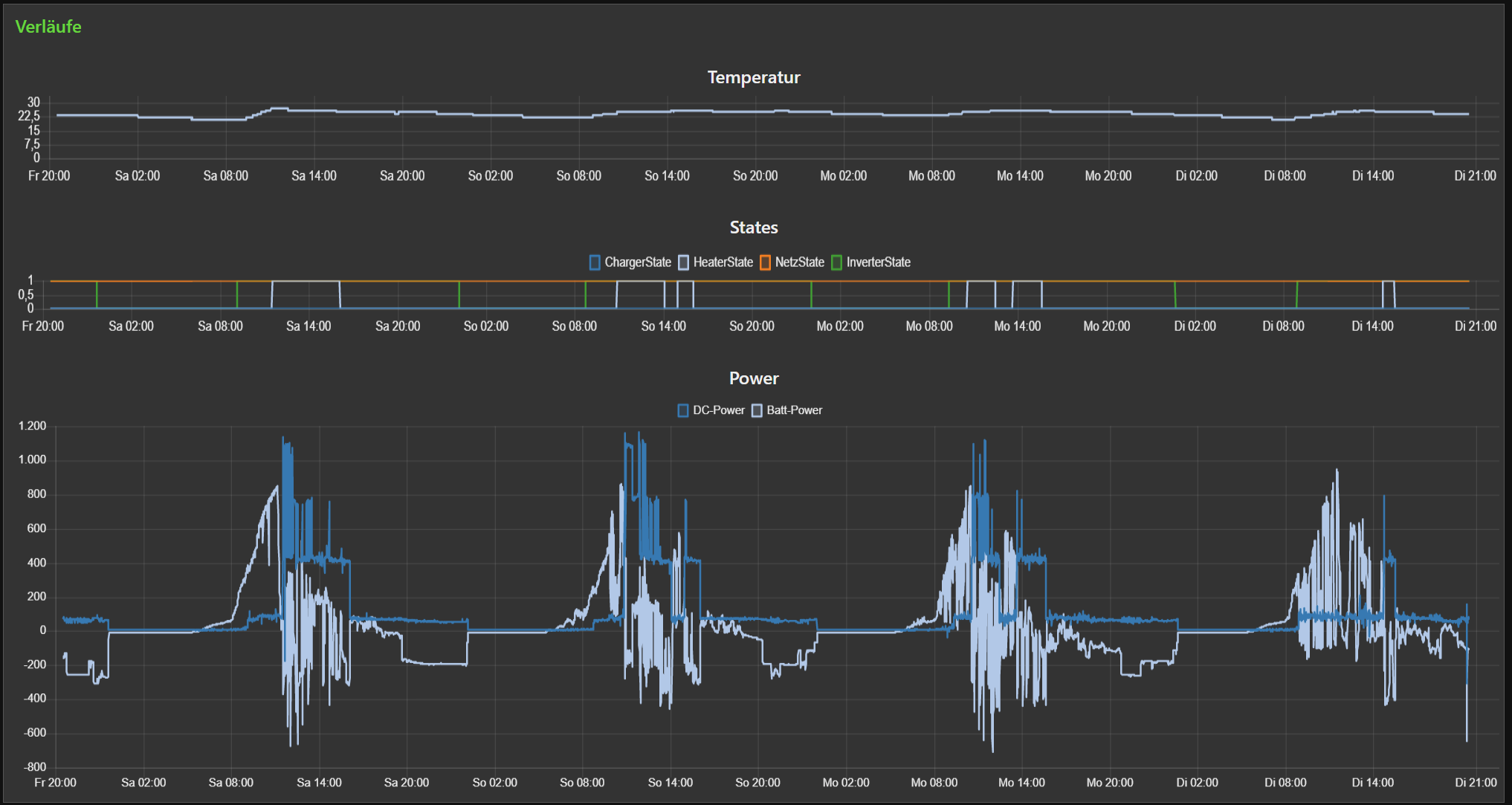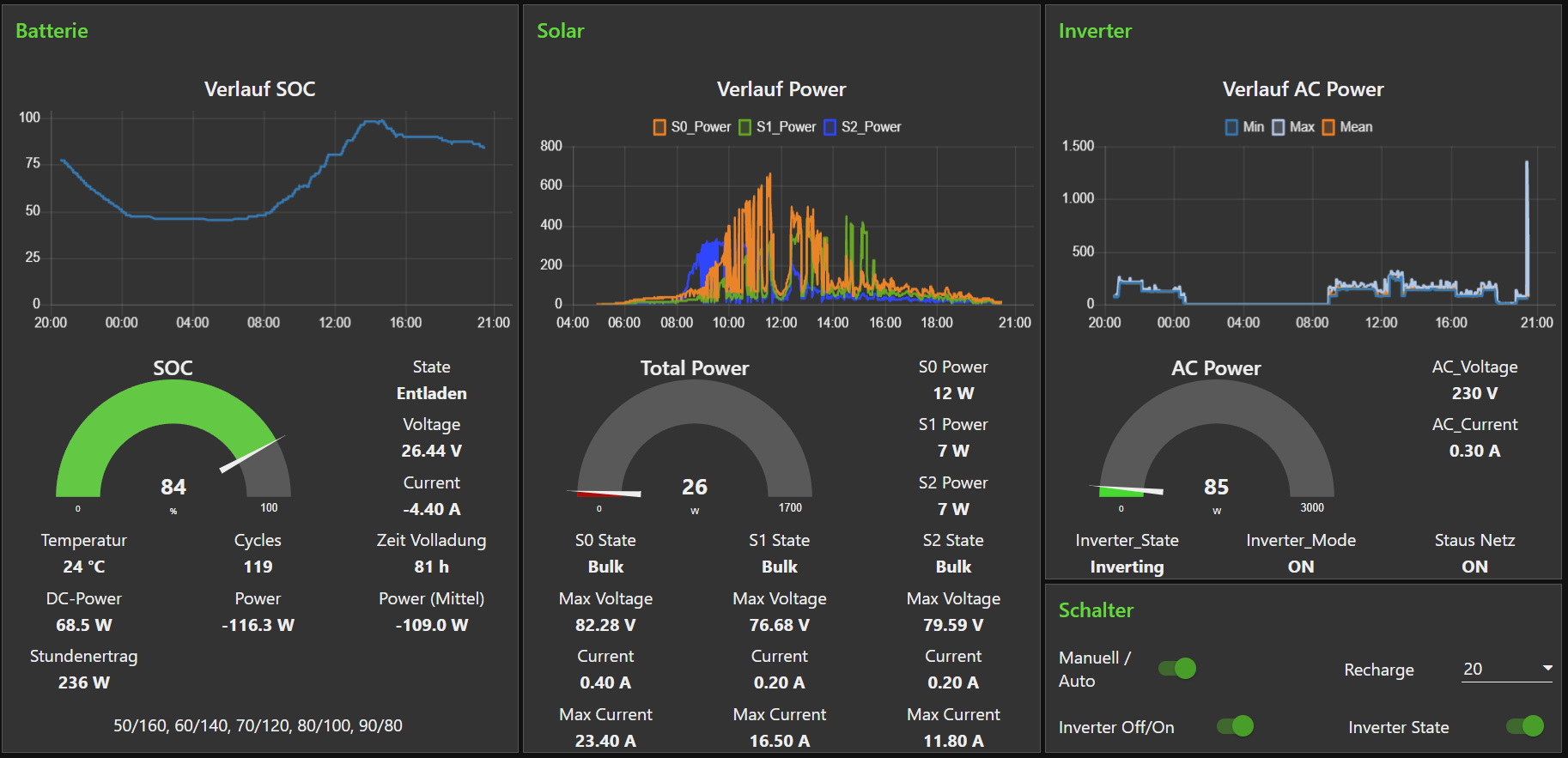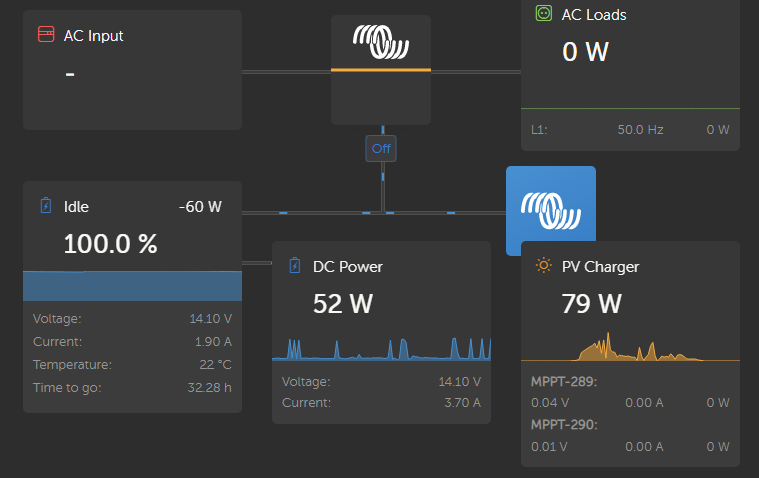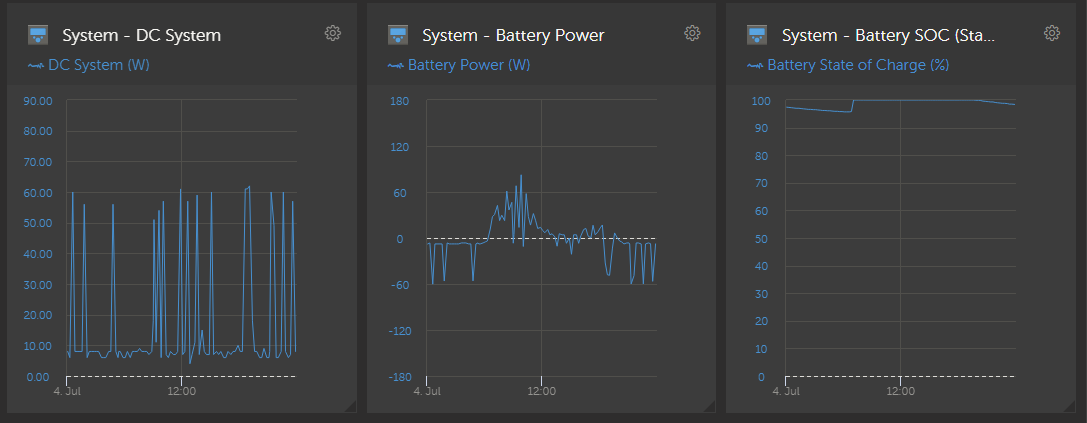So my use-case is a small travel trailer (caravan) that I'm going out part-time, although next spring I hope to do a lot of traveling and mostly live out of it for a few months. I've got a SmartSolar MPPT, OrionTr DC-DC, and BlueSmart 110v charger, BMV-712 monitor. Everything works great so far, except for me being able to see historical trends/usages. As in minute-by-minute (or at least hour-by-hour) how much solar I'm getting in, how much power I'm actually using, etc.
I initially thought VenusOS via VE.Direct from the SmartSolar & BMV-712 would be what I wanted, got it on a RPi, hooked it up temporarily, but I've since realized it doesn't seem to have that level of logging/viewing of data that I want. Is that correct? Should I instead just hook up VE.Direct and plain old Linux with my own recording stuff using a library such as https://github.com/karioja/vedirect or just implement directly from the docs from https://www.victronenergy.com/live/vedirect_protocol:faq? Or is there a part of VenusOS that will do what I'd actually like?




